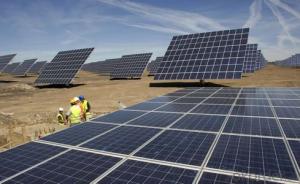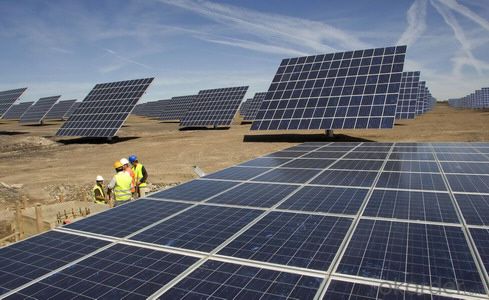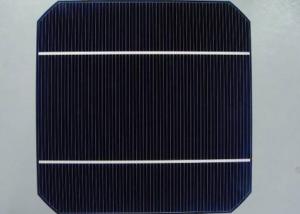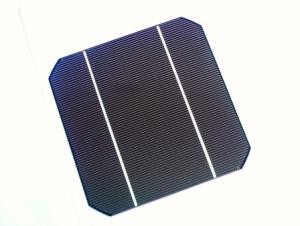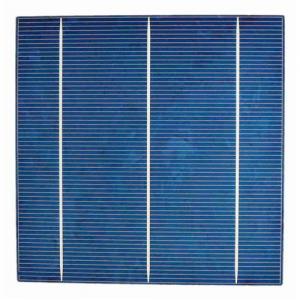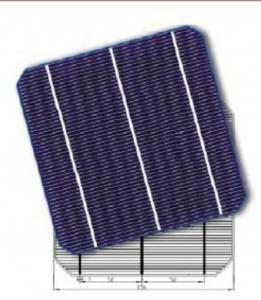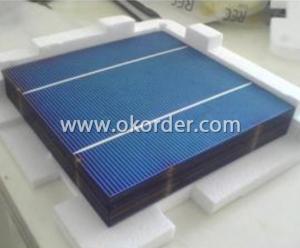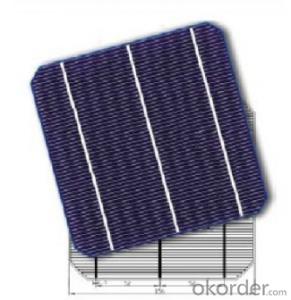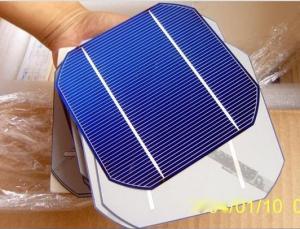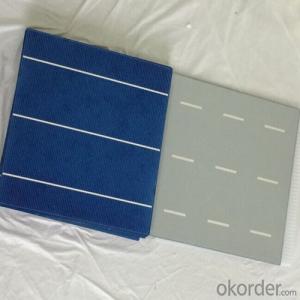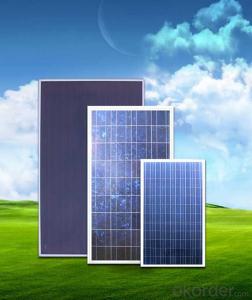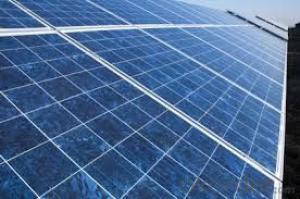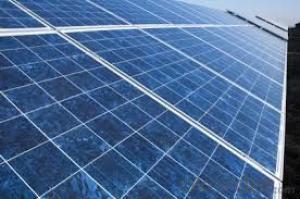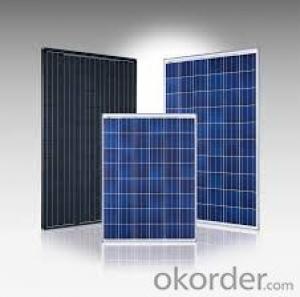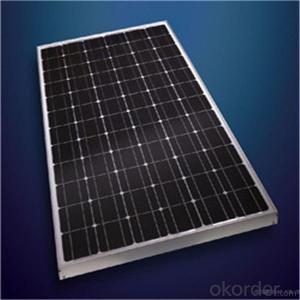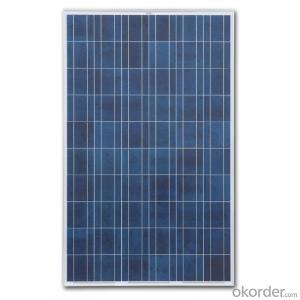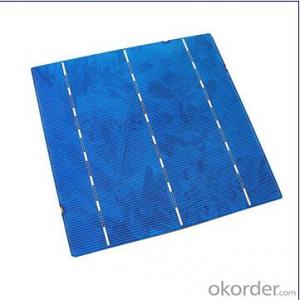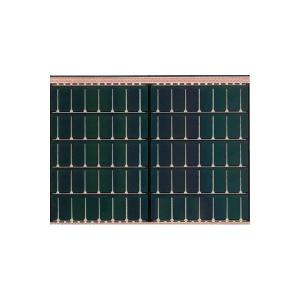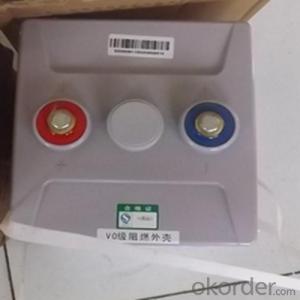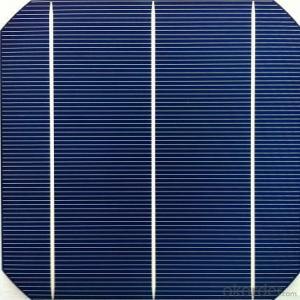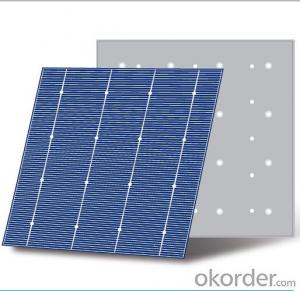High Quality Polycrystalline Solar Cells Germany - Best Price CNBM Solar Panel
- Loading Port:
- Qingdao
- Payment Terms:
- TT OR LC
- Min Order Qty:
- 10 set
- Supply Capability:
- 300000 set/month
OKorder Service Pledge
OKorder Financial Service
You Might Also Like
Polycrystalline Solar Modules
CNBM offers a range of small, medium and large polycrystalline solar modules, designed for a range of requirements.
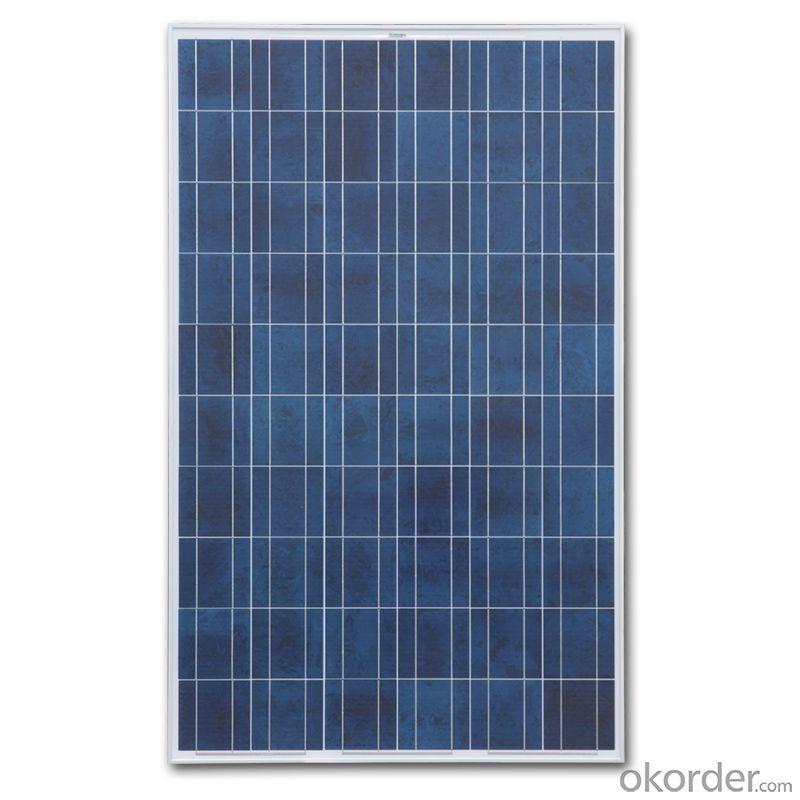
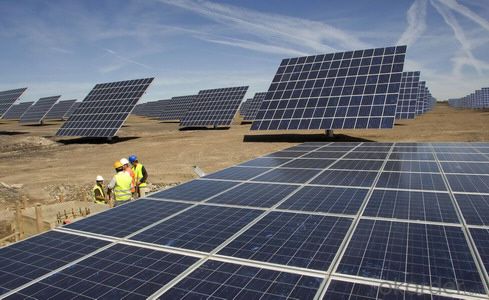
Specifications:
Tolerance | +/-3% |
Cell | Polycrystalline silicon solarcells (156 x 156mm) |
N0. of Cells | 60 (0 x 6) |
Dimension of Modules (mm) | 1650 x 990 x 40 |
Weight (kg) | 25.5 |
Limits:
Operating Temperature | -40~+85? |
Storage Temperature | -40~+85? |
Maximum System Voltage | 1000 VDC max. |
Hail Impact | Diameter of 28mm with impact speed |
Temperature and Coefficients:
NOCT | 48C+/-2? |
Voltage temperature coefficient (%/K) | -0.35 |
Current temperature coefficient (%/K) | 0.05 |
Power temperature coefficient (%/K) | -0.45 |
Characteristics:
Model: | SGM-200P | SGM-210P | SGM-220P |
Max-power voltage Vmp (V) | 29.2 | 29.4 | 29.41 |
Max-power current Imp (A) | 6.85 | 7.14 | 7.48 |
Open-circuit voltage Voc (V) | 36.5 | 36.69 | 36.9 |
Short-Circuit Current Isc (A) | 7.28 | 7.6 | 7.93 |
Max-power Pm(W) | 200 | 210 | 220 |
Model: | SGM-230P |
Max-power voltage Vmp (V) | 29.8 |
Max-power current Imp (A) | 7.72 |
Open-circuit voltage Voc (V) | 37.31 |
Short-Circuit Current Isc (A) | 8.19 |
Max-power Pm(W) | 230 |
STC: Irradiance 1000W/m2, module temperature 25?, AM-=1.5
Poly Crystalline Solar Panels Specifications Range
Maximum Power (Pm) | Dimension | Weight | Operating Voltage (Vmp) | Operating Current (Imp) | Open Circuit Voltage (Voc) | Short Circuit Current (Isc) |
0.45W | 140x80x10mm | 0.08kg | 3.3V | 150mA | 4.6V | 160mA |
1.0W | 162x140x10mm | 0.16kg | 7.5V | 150mA | 10.3V | 160mA |
4.5W | 269x251x23mm | 0.8kg | 16.5V | 0.27A | 20.5V | 0.3A |
10W | 420.1×268.9×22.6mm | 1.92kg | 17.5V | 0.58A | 20.5V | 0.6A |
20W | 425x502x50mm | 3.0kg | 16.8V | 1.19A | 21.0V | 1.29A |
30W | 593x502x22.6mm | 3.9kg | 16.8V | 1.78A | 21.0V | 1.94A |
40W | 655x537x50mm | 5.75kg | 17.3V | 2.31A | 22.1V | 2.54A |
50W | 839x537x50mm | 6.0kg | 17.5V | 2.9A | 21.8V | 3.17A |
65W | 1111x502x50mm | 7.2kg | 17.6V | 3.69A | 22.1V | 3.99A |
80W | 1204x537x50mm | 7.7kg | 17.6V | 4.55A | 22.1V | 4.8A |
- Q: What is the impact of hurricane-force winds on solar cell efficiency?
- The impact of hurricane-force winds on solar cell efficiency can be significant. These strong winds can cause physical damage to solar panels, such as breaking or dislodging them from their mounts. This not only affects the overall functionality of the solar system but can also lead to a decrease in energy generation. Additionally, high winds can result in the accumulation of dust, dirt, or debris on the surface of the solar panels, reducing their ability to absorb sunlight and convert it into electricity. Therefore, it is crucial to ensure proper installation and maintenance of solar systems in hurricane-prone areas to minimize the negative impact on efficiency.
- Q: Can solar cells be used in powering communication networks?
- Yes, solar cells can be used to power communication networks. Solar cells convert sunlight into electricity, providing a reliable and renewable source of power. This makes them suitable for remote areas where traditional power sources may not be available or practical. By harnessing solar energy, communication networks can operate efficiently while reducing reliance on fossil fuels and minimizing their environmental impact.
- Q: What is the maximum efficiency possible for a solar cell?
- The maximum efficiency possible for a solar cell is currently around 46%.
- Q: Are there any health risks associated with solar cells?
- There are no direct health risks associated with solar cells themselves. However, the manufacturing and disposal processes of solar panels can have some environmental impacts and potential health risks if not managed properly.
- Q: Can solar cells be used on satellites?
- Yes, solar cells can be used on satellites. In fact, they are commonly used to power satellites in space by converting sunlight into electricity.
- Q: How do solar cells perform in areas with high levels of salt spray?
- Solar cells generally perform well in areas with high levels of salt spray. The materials used in solar cells are designed to be resistant to corrosion and degradation caused by salt exposure. However, regular cleaning and maintenance may be required to ensure optimal performance and prevent any potential buildup of salt deposits on the surface of the solar panels.
- Q: Can solar cells be used for powering amusement parks?
- Yes, solar cells can be used for powering amusement parks. Solar energy can be harnessed and converted into electricity, which can then be used to power various rides, attractions, and facilities within the park. By utilizing solar cells, amusement parks can reduce their reliance on traditional energy sources and reduce their carbon footprint.
- Q: Can solar cells be used in telecommunications systems?
- Yes, solar cells can be used in telecommunications systems. Solar cells are capable of converting sunlight into electricity, which can power various telecommunications equipment such as base stations, repeaters, and remote monitoring systems. This allows for reliable and independent power supply in remote areas or during power outages, making solar cells an energy-efficient and sustainable solution for telecommunications systems.
- Q: Are solar cells affected by shade or partial shading?
- Yes, solar cells are affected by shade or partial shading. When a solar cell is shaded, its performance is significantly reduced as shade blocks the sunlight needed to generate electricity. Even a small amount of shade on a portion of the solar cell can greatly impact its overall efficiency and output. Therefore, it is important to avoid shade or find ways to minimize its impact on solar panels to ensure optimal energy production.
- Q: How is the efficiency of a solar cell calculated?
- The efficiency of a solar cell is calculated by dividing the electrical power output of the cell by the incident solar power input. The formula for efficiency is Efficiency (%) = (Power output / Power input) x 100.
Send your message to us
High Quality Polycrystalline Solar Cells Germany - Best Price CNBM Solar Panel
- Loading Port:
- Qingdao
- Payment Terms:
- TT OR LC
- Min Order Qty:
- 10 set
- Supply Capability:
- 300000 set/month
OKorder Service Pledge
OKorder Financial Service
Similar products
Hot products
Hot Searches
Related keywords
